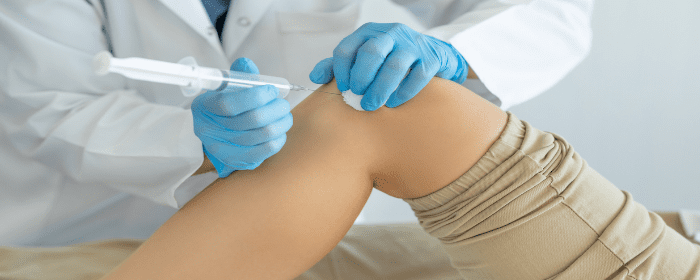Osteoarthritis is the most common form of arthritis, affecting more than 900 million people around the world. Developing when the cartilage that protects your bones wears down, osteoarthritis (OA) most commonly affects the joints of the hand, hips, spine, and knees[1].
While current treatment for OA and related joint damage is focused primarily on managing pain and minimizing further damage, function, and quality of life issues, no preventative therapeutic treatment currently exists for preventing or rehabilitating the condition.
Recently, stem cell therapy has been found to be an efficient therapeutic approach for treating degenerative joint conditions, including OA. Specifically, mesenchymal stem cells (MSCs), from adipose cells have been demonstrated to be the most promising type of stem cell for treating osteoarthritis.
In this study, Bui et al. studied the outcomes of applying MSCs harvested from adipose tissue in an effort to evaluate the therapeutic potential when transplanted in patients with grade II and III osteoarthritis.
Building on the findings of previously published studies, the authors specifically evaluated the in vitro and animal model effects of platelet-rich plasma (PRP) on the differentiation of adipose-derived stem cells (ADSC).
Previous studies have demonstrated that PRP treatment of ADSCs promotes differentiation and proliferation into chondrogenic cells which resulted in improved healing of articular cartilage when ADSCs were pretreated with PRP. An additional study demonstrated the effects of PRP on the non-expanded stromal vascular fraction (SVF) in cartilage injury observed in an animal model, demonstrating significant regeneration of cartilage.
The aim of this clinical trial was to evaluate the efficiency and related side effects of non-expanded SVF when combined with PRP in treating OA grade II or III.
At the conclusion of Bui et al.’s study, patients demonstrated significant improvements in key measures, including improved joint function, decreased pain score, and improved gradual and consistent improvement observed in pre and post observations as measured by the Lysholm score.
As further evidence of the success associated with a therapeutic treatment combination of ADSC and PRP, post-treatment MRIs demonstrated cartilage regeneration and thicker layers of cartilage at the injured site after 6 months of treatment. In addition, all participating patients reported reduced pain levels after 3 months and 71% of patients demonstrated the ability to climb and descend stairs after 3 months. None of the patients participating in this study demonstrated infection, tumor formation, or any other side effect or complication as a result of this procedure.
As a result of their findings in this study, Bui et al. conclude that this therapeutic treatment method was successful in reducing pain, regenerating cartilage, and improving the quality of life for patients who participated. However, considering the small size of this study, the authors call for additional and larger-scale studies to confirm the potential for this promising, minimally invasive stem cell therapy for patients with osteoporosis.
Source: “Symptomatic knee osteoarthritis treatment using autologous adipose ….” 5 Oct. 2016, http://www.bmrat.org/index.php/BMRAT/article/view/11.
[1] “Osteoarthritis – Symptoms and causes – Mayo Clinic.” 16 Jun. 2021, https://www.mayoclinic.org/diseases-conditions/osteoarthritis/symptoms-causes/syc-20351925.


 St. Petersburg, Florida
St. Petersburg, Florida
